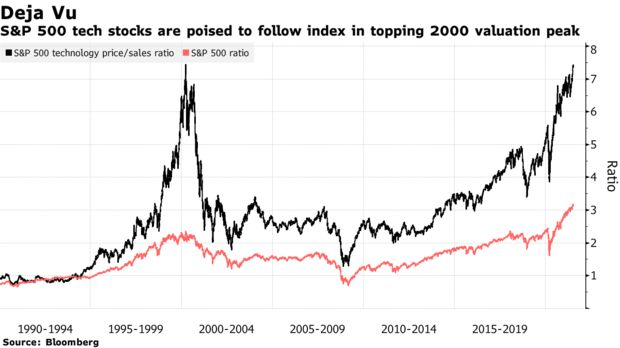- S&P 500 slipped from record; dollar gauge maintains advance.
- U.S. CPI surge tests Fed view that price pressures transitory.
Asian stocks were mixed early Wednesday after Wall Street fell from a record and bond yields rose following a surprise U.S. inflation jump that stirred the debate on how long Federal Reserve policy can stay ultra-loose.
Shares fluctuated in Japan, dipped in South Korea and were steady in Australia. U.S. futures were little changed after the S&P 500 slipped for the first time in three trading sessions while the Nasdaq 100 ended little changed. Traders are digesting a release showing the highest U.S. inflation since 2008 as well as mixed earnings from JPMorgan Chase & Co. and Goldman Sachs Group Inc.
The Treasury yield curve saw volatility Tuesday. Weak demand for the monthly 30-year bond auction unleashed a bout of steepening that reversed a flattening move spurred by hot June inflation readings. The 10-year U.S. Treasury yield remained above 1.41% and the dollar held gains.

“The debate is centered around where will inflation settle when things normalize about a year from now -- is it north of 2% or south of 2%?” Jimmy Chang, chief investment officer at Rockefeller & Co., said on Bloomberg Television, adding he expects Powell to sound “fairly dovish.”
Investors are also monitoring the spread of the more contagious delta variant of Covid-19, which is hampering the recovery from the pandemic in some parts of the world. The unfolding earnings season is key too, with global stocks close to record highs on optimism over the bounce back from the health crisis.
Oil edged lower after touching the highest price in more than 2 1/2 years. The prospect of an imminent flood of crude exports from Iran and other major producers has waned, and the International Energy Agency has warned of a deepening supply crunch.
Here are some events to watch this week:
- The Reserve Bank of New Zealand’s latest interest rate policy Wednesday
- Bank of Korea monetary decision Thursday
- China second-quarter GDP, key economic indicators Thursday
- Federal Reserve Chair Jerome Powell appears before the Senate Banking Committee to deliver the semi-annual Monetary Policy Report to Congress Thursday
- Bank of Japan interest rate decision Friday
These are some of the main moves in financial markets:
Stocks
- S&P 500 futures were steady as of 9:32 a.m. in Tokyo. The S&P 500 fell 0.4%
- Nasdaq 100 futures were stable. The Nasdaq 100 was little changed
- Japan’s Topix index fell 0.1%
- Australia’s S&P/ASX 200 Index rose 0.2%
- South Korea’s Kospi index fell 0.4%
- Hang Seng Index futures slipped 0.1% earlier
Currencies
- The Japanese yen was at 110.70 per dollar
- The offshore yuan was at 6.4820 per dollar
- The Bloomberg Dollar Spot Index was little changed
- The euro traded at $1.1775
Bonds
- The yield on 10-year U.S. Treasuries was at 1.42%
- Australia’s 10-year bond yield rose four basis points to 1.36%
Commodities
- West Texas Intermediate crude dropped 0.3% to $75.05 a barrel
- Gold was steady at $1,805.81 an ounce
精彩评论